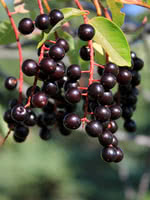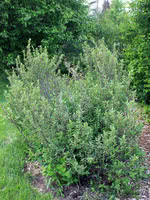Mon-Fri 9am - 5pm Mountain time
Western Chokecherry vs Canadian Buffaloberry
Prunus virginiana var. demissa
Shepherdia canadensis
Western Chokecherry is a shrub or small tree commonly used for farmstead and field windbreaks.
It produces white flowers in the spring and edible dark purple fruit that matures between September and October. Its cherries are great for making for making jams, jellies or wine, but are not very palatable for raw eating.
Canadian Buffalo Berry is a native deciduous shrub found throughout North America. This hardy, medium-sized shrub will tolerate poor soil conditions and produces attractive, edible–though very bitter–red fruit.
Western Chokecherry Quick Facts
Canadian Buffaloberry Quick Facts
Toxicity: toxic to horses, cattle, etc.)

